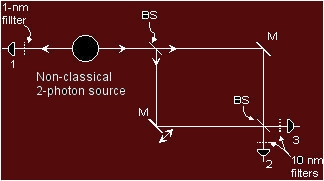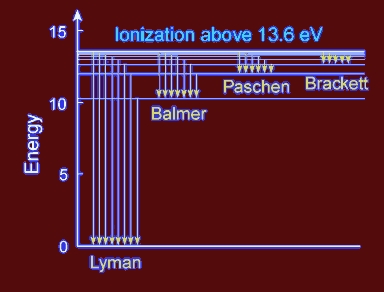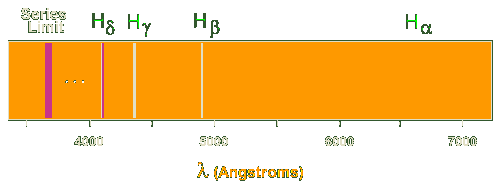Proofs and Experiments
Whether the following experiments and mathematics point to any proof of a parallel meshing universe is a matter for others to consider. They are only ideas that are put forward to cause reactions.
Phase Difference Measurement using Photons
The phase difference could be measured, although it would be necessary to allow for the probability that there may well be a number of parallel universe possibilities (most will have negligible effect on the influential mass because of their larger temporal phase differences). However, if photons are basic elements produced by all universes, they may also share the same space occupied by a photon in our universe, but not necessarily the same temporal phase.
One experiment where this temporal phase difference may have already been observed concerns passing single photons through interference slits (or a beam splitter) to measure the quantum effects. If a single photon is sent toward a screen through two slits or splitting mirror, rather than two spots eventually building up opposite the two slit openings, what eventually builds up is the interference pattern of alternating bright and dark lines. The result suggests that a single photon may split into two (or more) photons (i.e. one from each universe) but with a different time phase to pass through two or more slits and create an interference pattern! Each photon being shared by other merged universes. Adding further slits/splitters could be used to find the number of universes merged by identifying the temporal differences.
References:
http://www.space.com/searchforlife/quantum_astronomy_041111.html>
http://departments.colgate.edu/physics/research/Photon/five_experiments.htm
for experiments.

As the diagram shows, the apparatus is set up as a Mach-Zehnder interferometer, and the non-classical source guarantees with high probability the presence of a single photon. The appearance of maxima and minima in the counts in detectors 2 and 3 as one arm of the interferometer is varied shows the interference with visibility of 98%.
Note: Many experiments that purport to do this are vitiated by the fact that the observed effects can also be explained classically. A two-photon nonclassical light source and coincidence detection allow the production of single-photon states with high certainty.
This experiment can also demonstrate dramatically the effect of coherence length. A 10 nm wide filter placed in the interferometer creates a coherence length of about 50 µm. Then when the interferometer arms are adjusted so that one is more than 50 µm longer than the other, the fringes disappear. Insertion of a 1-nm filter in front of the trigger detector 1, however, increases the coherence lengths of the idler and corresponding signal photons, and the fringes reappear.
The single photon experiment above (at colgate.edu - see diagram) identifies a path difference of 50µm to remove the interference. At the speed of the light the photon at 300x106 m/s takes 50/300 s = 16ms. This could indicate that a parallel universe's photon and our universe's photon exist together but separated by a temporal phase difference of 16ms between our universe and a parallel universe (assuming the speed of light is the same in the parallel universe – see below).
Measurement of Dark Matter Mass
This is already being calculated by astronomers. A suitable phase curve can be deduced by the estimated dark matter (and energy) required in our universe to cause our universe to expand at the rate measured, e.g. as processed by the Millennium Simulation. I believe the latest figure produces a dark matter result of about 80-90% of our universe's total mass. This dark matter could be represented in Fig 1 above by the areas below the probability curve either side of the area representing the mas of our universe (within the limits).
If
the parallel universe(s) are similar masses then 80% dark
matter would suggest four merging universes influencing ours
because our universe contains the remaining 20% of matter. I suggest
that the influence of other universes will vary according to the
phase differences.
Parallel Universe Detection by Different EM Bands
It would seem logical to assume that if spatial dimensions could be shared by the other parallel universes and the geometry of space is changed by this additional matter, then the speed of light (and other EM waves) may also change in different areas of our universe. It is the temporal difference in the matter of other universes that causes the undetectability but phase shifted light may be detectable in a similar same way to red shift measurements.
I have another theory concerning the speed of light that relates the speed to the total mass of the universe and it's rate of expansion; therefore it may be possible to measure the masses of parallel universes if the light from them can be detected and the speed measured.
If the single photon measurement of 16ms applies to a single merging universe, then this would probably have four times the mass of ours and would have four times the speed of light, so the phase difference would actually only be 4ms. This should also be viewable in a shift spectra record, but at four times the frequency. For the H line (normally 410nm), that should now be around 100nm (ultraviolet shift? or some intermediate frequency? I haven't been able to find information on that question yet).
How we detect and measure the phase difference may cause problems because we exist only in one phase and would need to measure an indirect effect. Dark matter and energy could be an indication of detection and the quantity of Dark matter, etc and would be some indication of the total mass in the merging parallel universes. Another problem is that each merging universe may not contribute 100% of its own mass, depending on the amount of phase difference to our universe, so we may not be able to measure the masses correctly.
Energy Levels in Atoms
 Physicists are familiar with these energy levels, but I have never
found an explanation about why this should occur. The example spectrum
of hydrogen I have chosen here is particularly important in astronomy
because most of the Universe is made of hydrogen.
Physicists are familiar with these energy levels, but I have never
found an explanation about why this should occur. The example spectrum
of hydrogen I have chosen here is particularly important in astronomy
because most of the Universe is made of hydrogen. Emission or absorption processes in hydrogen give rise to series, which are sequences of lines corresponding to atomic transitions, each ending or beginning with the same atomic energy state in hydrogen. Thus, for example, the Balmer Series involves transitions starting (for absorption) or ending (for emission) with the first excited state of hydrogen, while the Lyman Series involves transitions that start or end with the ground state of hydrogen; the adjacent image illustrates the atomic transitions that produce these two series in emission.
Because
of the details of hydrogen's atomic structure, the Balmer Series is in
the visible spectrum and the Lyman Series is in the the UV. The
following image illustrates some of the transitions in the Balmer
series. Could this also be an indication of how much and how many other
parallel universes affect ours?

The Balmer lines are designated by H with a greek subscript in order of
decreasing wavelength. Thus the longest wavelength Balmer transition is
designated H with a subscript alpha, the second longest H with a subscript beta,
and so on.